Gotisk kunst fascinerte middelalderens Europa da den oppsto fra romansk kunst i Nord-Frankrike på midten av 1100-tallet. Den karakteristiske stilen spredte seg over hele Vest-Europa og videre. Dens innflytelse varte fra dens opprinnelige røtter i 1140 til slutten av 1500-tallet i noen regioner.
Moderne gotisk kunst oppsto fra en bemerkelsesverdig ingeniørutfordring som fokuserte på å spenne over bredere steinflater fra større høyder. Spisse buer, dramatisk vertikalitet og rik symbolikk kjennetegner denne gotiske kunststilen og oversettes vakkert til moderne designapplikasjoner. Eksempler på gotisk kunst finnes i skulptur, panelmaleri, farget glass og opplyste manuskripter gjennom historien. Reims-katedralen står som et vitnesbyrd om den høye gotiske stilen som fortsatt inspirerer kunstnere og designere. Dette stykket utforsker hvordan disse århundregamle estetiske prinsippene kan revolusjonere vanlige telefonetuier til ekstraordinære uttrykk for gotisk kunststil.
Opprinnelsen og oppgangen til gotisk kunst
Fra romansk til gotisk: En transformasjon
Overgangen fra romansk til gotisk står som en av de viktigste kunstneriske revolusjonene i vestlig historie. Romansk arkitektur hadde tykke vegger, runde buer og små vinduer som vektla strukturell soliditet over dekorasjon. Middelalderske murer utviklet strålende innovasjoner rundt 1120 som ville omforme scenen for alltid.
Den spisse buen ble det definerende kjennetegnet for gotisk stil og erstattet de runde buene i kjellerhvelv. Denne enkle endringen hjalp med å fordele vekten nedover fra toppunktet. Byggere kunne nå lage høyere, mer ambisiøse strukturer. Gotiske bygninger nådde enestående høyder samtidig som de forble strukturelt solide.
Gothisk arkitekturs oppgang og dens innvirkning på kunst
Abbed Suger gjorde gotisk arkitektur populær gjennom sin renovering av Saint-Denis-klosteret nær Paris mellom 1140-1144. Hans banebrytende "visuell teologi"-konsept trodde at guddommelig lys viste Guds nærvær. Han ønsket å skape et rom der lyset kunne flomme inn.
Gothisk stil introduserte ribbeformede hvelv der steinbuer holdt tynne steinplater i stedet for tunge murkonstruksjoner. Disse hvelvene veide mindre og presset mindre utad. Byggere kunne nå bruke tynnere vegger med større vinduer. Flyvende støttemurer—eksterne halvbuer—flyttet trykket fra ribbehvelvet over utvendige vegger til frittstående pilarer.
Gotisk arkitektur skapte et skjelettrammeverk som lot innvendige rom nå dramatiske høyder. Denne arkitektoniske transformasjonen formet alle andre kunstformer. Stilen spredte seg raskere fra bygninger til skulptur, tekstiler, maleri, fresker, farget glass, opplyste manuskripter og panelmalerier.
Europeisk spredning og regionale stiler
Gotisk kunst startet i Frankrike og blomstret gjennom Europa med unike regionale trekk. England utviklet sin tidlige engelske gotiske stil rundt 1200. Lincoln-katedralen (påbegynt 1192) og Wells-katedralen (ca. 1180-ca. 1245) viser sine tykke vegger, fremhevede moldinger og slanke spisse lancetvinduer.
Tyske gotiske bygningshåndverkere foretrakk masse og mystikk. De skapte bredere planer med tykkere vegger, som sett i Kölnerdomen (påbegynt 1248). Spansk gotikk la vekt på vertikale elementer og dekorative detaljer. Italiensk gotikk forble mer horisontal med fokus på symmetri og farge som reflekterte regionens klassiske romerske røtter.
En sammenhengende, men mangfoldig internasjonal gotisk stil oppsto på slutten av 1300-tallet og varte i mange områder til 1500-tallet. Renessansekritikere kalte den "gotisk" for å håne dens tilknytning til de "barbariske" goterne. Likevel etterlot denne banebrytende bevegelsen et varig preg på europeisk visuell kultur.
Nøkkelvisuelle elementer i gotisk stil
Spisse buer og vertikalitet
Den spisse buen forblir den mest karakteristiske egenskapen ved gotisk kunst. Den erstattet runde romanske buer med en form som kanalisere vekt nedover mer effektivt. Dette gjennombruddet tillot arkitekter å bygge høyere, mer omfattende strukturer som når mot himmelen. Runde buer presser ut og trenger tung støttemur. Spisse buer derimot retter vekten nedover. Dette designet gjør det mulig med tynnere, mer delikate støtter og mindre veggplass.
Geniet bak denne funksjonen ligger i å vite hvordan man kan dekke større områder samtidig som man opprettholder strukturell styrke. Den arkitektoniske elementet representerer åndelig oppstigning og trekker betrakterens øyne oppover i åndelig refleksjon.
Fargede glass og lys-symbolikk
Gotisk arkitektur oppdaget det fulle potensialet av naturlig lys gjennom massive fargede glassvinduer som ofte dekket hele vegger. Sainte-Chapelle i Paris viser dette perfekt med femten tårnende vinduer. Hvert vindu er 15 meter høyt. Middelaldersk kristen teologi så lys som Guds nærvær - et fysisk tegn på guddommelig nåde som flyter inn i hellige rom.
Fargede glassvinduer hadde to formål. De skapte fantastiske visuelle opplevelser og fungerte som "Bibler for lekfolk" da de fleste ikke kunne lese. Disse fargerike vinduene fortalte bibelske historier gjennom livlige bilder som utdannet og inspirerte de troende.
Forlengede figurer og emosjonelle uttrykk
Gotiske kunstnere beveget seg bort fra tidligere tradisjoner. De skapte figurer med naturlige positurer, uttrykksfulle ansikter og emosjonell dybde. Figurene viser ofte en S-formet kurve eller sving, fremhevet av flytende draperier. Gotiske figurer ser mer realistiske og emosjonelt engasjerende ut sammenlignet med de stive, stiliserte formene fra tidligere perioder.
Bruk av gull og rike fargepaletter
Gullblad ble essensielt for den gotiske visuelle stilen, spesielt i malerier og opplyste manuskripter. Kunstnere brukte gull for å vise guddommelighet, himmelsk lys og kongelig status. Gotiske fargepaletter hadde dype rødt, blått, lilla og rike grønntoner utover gull. Disse dristige fargene skapte dramatiske effekter, spesielt i glassmalerier. Den berømte blåfargen i Chartres katedralvinduene kom fra kobolt.
8 gotiske kunstverk som inspirerer dristige telefonetuier
1. Wilton Diptych – Kongelig eleganse i miniatyr
Dette middelalderske engelske panelmaleriet (ca. 1395-1399) viser fantastisk håndverk som passer perfekt for elegante telefondesign. Gullbladbakgrunnen har detaljerte preget mønstre som skaper et luksuriøst utseende. De livlige ultramarinblå klærne skiller seg ut vakkert. Diptykonets personlige preg—hvite hjorter og rosmarindekor—gir flott inspirasjon til individuelle sakdesign.
2. Reims katedral Skulpturer – Uttrykksfulle steinformasjoner
Reims katedral har 2 303 fantastiske statuer. Den berømte "Smilende Engel" er det mest gjenkjennelige stykket. Disse figurene viser naturlige positurer med S-formede kropper og flytende draperier, noe som vil se fantastisk ut på relieffstil telefonetuier. De lange figurene med sine raffinerte hoffuttrykk tilfører sofistikerte designelementer.
3. Sainte-Chapelle Glassmalerier – Livfull historiefortelling gjennom farge
Sainte-Chapelles femten massive glassmalerier viser 1 113 bibelske scener. Den enkle fargeskalaen—mest rødt, blått og gull—skaper et dramatisk og likevel enhetlig utseende, perfekt for dristige telefonetuier. Disse vinduene forteller historier fra Genesis til Apocalypse, noe som gjør dem ideelle for sekvensielle sakdesign.
4. De Très Riches Heures – Opplyst detalj og sesongmessig skjønnhet
Dette opplyste manuskriptet (ca. 1412-1416) viser vakre kalenderillustrasjoner av sesongaktiviteter med aristokratiske slott i bakgrunnen. Manuskriptets fine detaljer, lyse farger og gullakenter inspirerer til utallige design av telefonetuier som reflekterer årstider eller fremhever slottarkitektur.
5. Korsfæstelsesdiptykon av Jan van Eyck – Lagdelt symbolikk
Van Eycks diptykon viser den første realistiske månen i vestlig kunst, forskjellig fra de vanlige tomme skiver eller menneskeansikter. Den detaljerte ikonografien og rike symboler fungerer utmerket for sofistikerte sakdesign. Rammene har tekst på flere språk, noe som tilfører interessante typografiske elementer.
6. Jomfru og Barn-elfenbein – Grasiøse kurver og intimitet
Denne store elfenbeinskulpturen fremhever den grasiøse S-kurven som er vanlig i gotiske figurer. Det nære båndet mellom mor og barn og det flytende draperiet med dype diagonale folder ser perfekt ut på monokromatiske eller relieffstil-etuier. Gjenstående malingsrester antyder spennende farge-muligheter.
7. Jomfru Marias kroning – Himmelske temaer i gull
Dette dekorerte alterbildet viser Kristus som krones av Jomfru Maria omgitt av engler mot en fantastisk gullbakgrunn. Den stjernehimmelfargede regnbuen representerer himmelske sfærer, og skaper et kosmisk designelement. Historie-scener i predellaen fungerer vakkert for omsluttende etuier.
8. Bamberg-ridderen – Gotisk realisme i bevegelse
Denne livsstørrelse stein-hestestatuetten (ca. 1225-1237) fanger vakker frossen bevegelse og realisme. Den unge kronede rytteren sitter stolt med et intenst blikk og adskilte lepper, og skaper et kraftfullt bilde. Hesten ser oppmerksom ut med prikkende ører og en bøyet bakben, perfekt for dristige, uttrykksfulle etuier.
Design av moderne gotiske telefonetuier
Velge riktig kunstverk for din estetikk
Klassisk gotisk kunstverk gjør fantastiske telefontilbehør når du velger de riktige designene. Din personlige stil bør veilede deg mot en bestemt gotisk periode. Katedraldesign gir arkitektonisk skjønnhet, mens opplyste manuskripter har intrikate detaljer og rike farger. Mørketema-elskere vil finne gotiske skulpturer perfekte, ettersom deres uttrykksfulle figurer skaper dristige silhuetter mot enkle bakgrunner.
Dagens gotiske telefonetuier viser kjente verk som Jan van Eycks arbeid eller gotiske katedral-elementer. Du kan velge mellom fortellende scener eller separate dekorative elementer—hver skaper sitt unike utseende.
Balansering av mørkt gotisk kunstverk med moderne minimalisme
De beste gotisk-inspirerte telefonetuiene blander historiske ornamenter med ren moderne design. En smart tilnærming er å bruke et enkelt utskåret ansikt eller arkitektoniske detaljer mot en enkel bakgrunn i stedet for å fylle hele etuiet med komplekse mønstre [1]. Denne stilen belønner nøye inspeksjon, samtidig som den beholder en moderne kant.
Moderne gotiske design bruker funksjonell geometri og gjentatte former sammen med tradisjonelle elementer som skapninger, bein og subtile okkulte hint [1]. Suksess kommer av å finne den rette balansen mellom detaljerte gotiske elementer og rent rom rundt dem.
Bruk av farge, tekstur og kontrast på en effektiv måte
Gotisk kunstverk baserer seg på dristige kontraster mellom lys og skygge—perfekt for telefonetuidesign [1]. Farger som er dristige, skiller seg ut vakkert mot mørke bakgrunner [2]. Plastene til telefonetuier fungerer faktisk godt med den gotiske stilen, ettersom deres begrensede fargeutvalg hjelper med å skape slående visuelle uttrykk.
Legger til tekstur som etterligner lær eller stein, gir ekstra dybde til flate overflater [3]. These details make the case more interesting to touch and look at.
Tips for printing detailed gothic art on cases
Your gothic designs need 300 dpi resolution at final print size to look their best [2]. Keep important design elements away from edges and camera holes to avoid printing issues [2]. UV printing works best with PNG or PDF files, especially for designs with transparent effects [2].
Note that plastic shows fewer shades than paper, so gothic designs with strong color contrasts look better [2]. Your artwork should extend past the case edges into the bleed area for full coverage [2].
Conclusion
Gothic Artwork: From Medieval Cathedrals to Modern Phone Cases
Gothic artwork ranks among history's most lasting artistic movements. Its pointed arches, dramatic vertical lines, and rich symbolism continue to fascinate us. This style began as an architectural breakthrough in 12th century France and has grown into a versatile esthetic that works beautifully in today's designs.
Gothic art grew from both technical challenges and spiritual goals. It created a visual language full of towering structures, vivid stained glass, and expressive figures. Artists now draw endless inspiration from this tradition to create bold, distinctive phone case designs.
Eight Gothic masterpieces showcase the style's adaptability - from the detailed Wilton Diptych to the powerful Bamberg Rider. Each piece offers unique elements that turn simple phone accessories into powerful personal statements.
Creating successful Gothic-inspired phone cases needs careful design choices. The key lies in balance. Pairing ornate Gothic elements with simple modern backgrounds creates a sophisticated look. Strong color contrasts and textures make these designs visually appealing and pleasant to touch.
Gothic art strikes a chord because it blends technical mastery with deep emotional expression. These designs link us to centuries of artistic tradition while making a modern statement. Gothic artwork gives you endless ways to create unique phone cases, whether you love cathedral architecture, manuscript details, or expressive sculptures.
References
[1] - https://www.aesdes.org/2023/02/01/esthetics-of-modern-gothic-design
[2] - https://support.gelato.com/en/articles/9587846-optimizing-print-results-for-phone-cases
[3] - https://talevinsdesigns.com/products/gothic-ornate-leather-inspired-phone-case-dark-esthetic-cover?srsltid=AfmBOorsu61cyUHTbfqh3n6iCgTN-kmxhsA9Rwyw3zYHcFfEbPyG2qhs",
'1': "[2] - https://support.gelato.com/en/articles/9587846-optimizing-print-results-for-phone-cases",
'2': "[1] - https://www.aesdes.org/2023/02/01/esthetics-of-modern-gothic-design",
'3': "Referanser",
'4': "Gothisk kunst treffer en nerve fordi den kombinerer teknisk mestring med dyp følelsesmessig uttrykk. Disse designene knytter oss til århundrer med kunstnerisk tradisjon, samtidig som de gir et moderne uttrykk. Gothic kunst gir deg uendelige måter å lage unike telefonetuier på, enten du elsker katedralarkitektur, manuskriptdetaljer eller uttrykksfulle skulpturer.",
'5': "Å lage vellykkede Gothic-inspirerte telefonetuier krever nøye designvalg. Nøkkelen er balanse. Kombiner ornamentale Gothic-elementer med enkle moderne bakgrunner for et sofistikert utseende. Sterke fargekontraster og teksturer gjør disse designene visuelt tiltalende og behagelige å ta på.",
'6': "Åtte Gothic-mesterverk viser stilens tilpasningsevne - fra de detaljerte Wilton Diptych til den kraftfulle Bamberg-ridderen. Hvert stykke tilbyr unike elementer som gjør enkle telefontilbehør til kraftige personlige uttrykk.",
'7': "Gothisk kunst vokste frem fra både tekniske utfordringer og åndelige mål. Den skapte et visuelt språk fullt av tårnstruktur, levende farget glass og uttrykksfulle figurer. Kunstnere henter nå uendelig inspirasjon fra denne tradisjonen for å lage dristige, karakteristiske telefonetuier.",
'8': "Gothisk kunst regnes blant historiens mest varige kunstneriske bevegelser. Dens spisse buer, dramatiske vertikale linjer og rike symbolikk fortsetter å fascinere oss. Denne stilen startet som et arkitektonisk gjennombrudd i Frankrike på 1100-tallet og har utviklet seg til en allsidig estetikk som fungerer utmerket i dagens design.",
'9': "Gothisk kunst: Fra middelalderske katedraler til moderne telefonetuier",
'10': "Konklusjon",
'11': "Ditt kunstverk bør strekke seg utover kantene på etuiet og inn i bleed-området for full dekning",
'12': "Merk at plast viser færre nyanser enn papir, så gothiske design med sterke fargekontraster ser bedre ut",
'13': "UV-utskrift fungerer best med PNG- eller PDF-filer, spesielt for design med gjennomsiktige effekter",
'14': "Hold viktige design-elementer vekk fra kanter og kameralinser for å unngå utskriftsproblemer",
'15': "Dine gothiske design trenger 300 dpi oppløsning ved endelig utskriftsstørrelse for å se best ut",
'16': "Tips for å skrive ut detaljerte gothiske kunstverk på etuier",
'17': "Disse detaljene gjør etuiet mer interessant å ta på og se på.




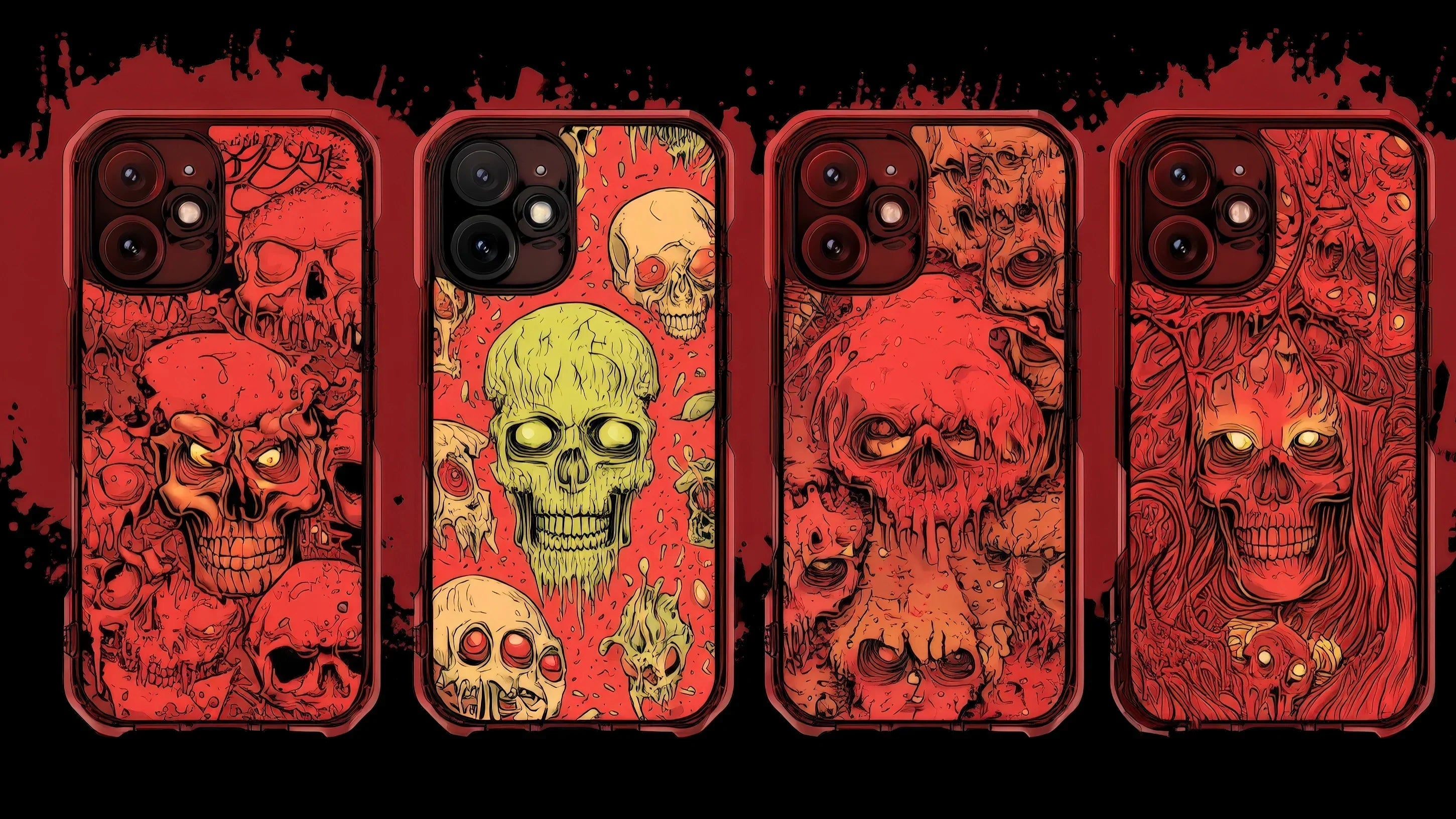





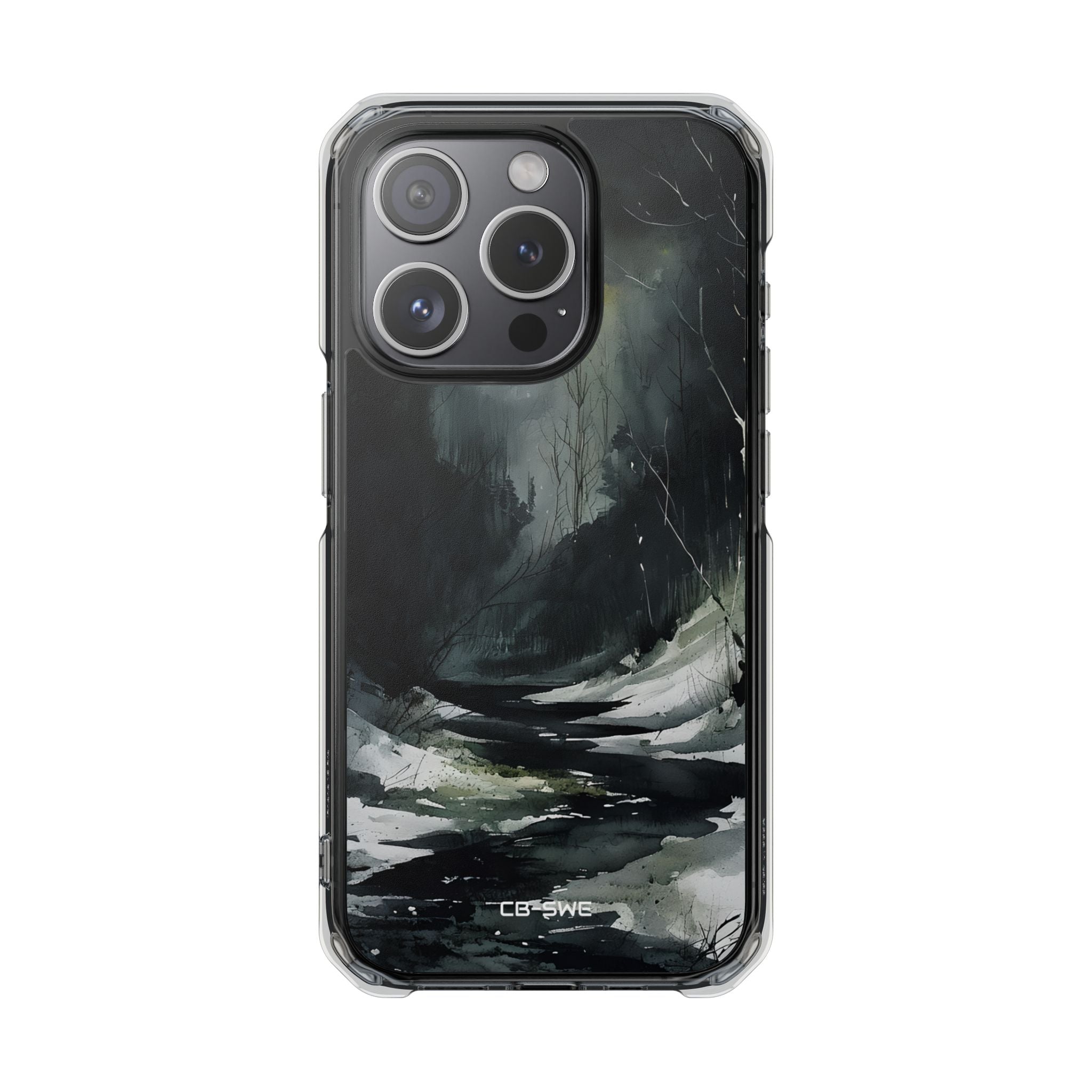


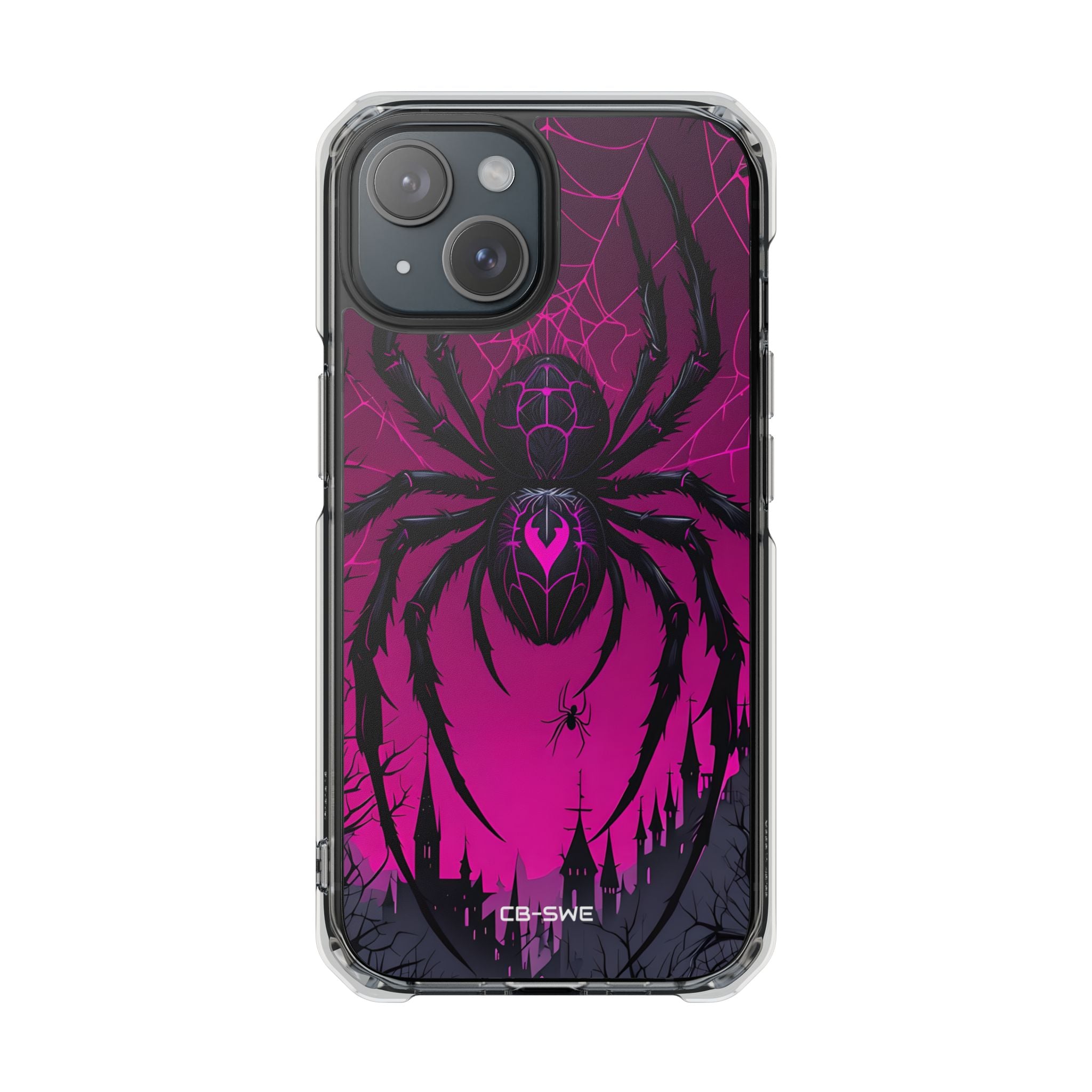



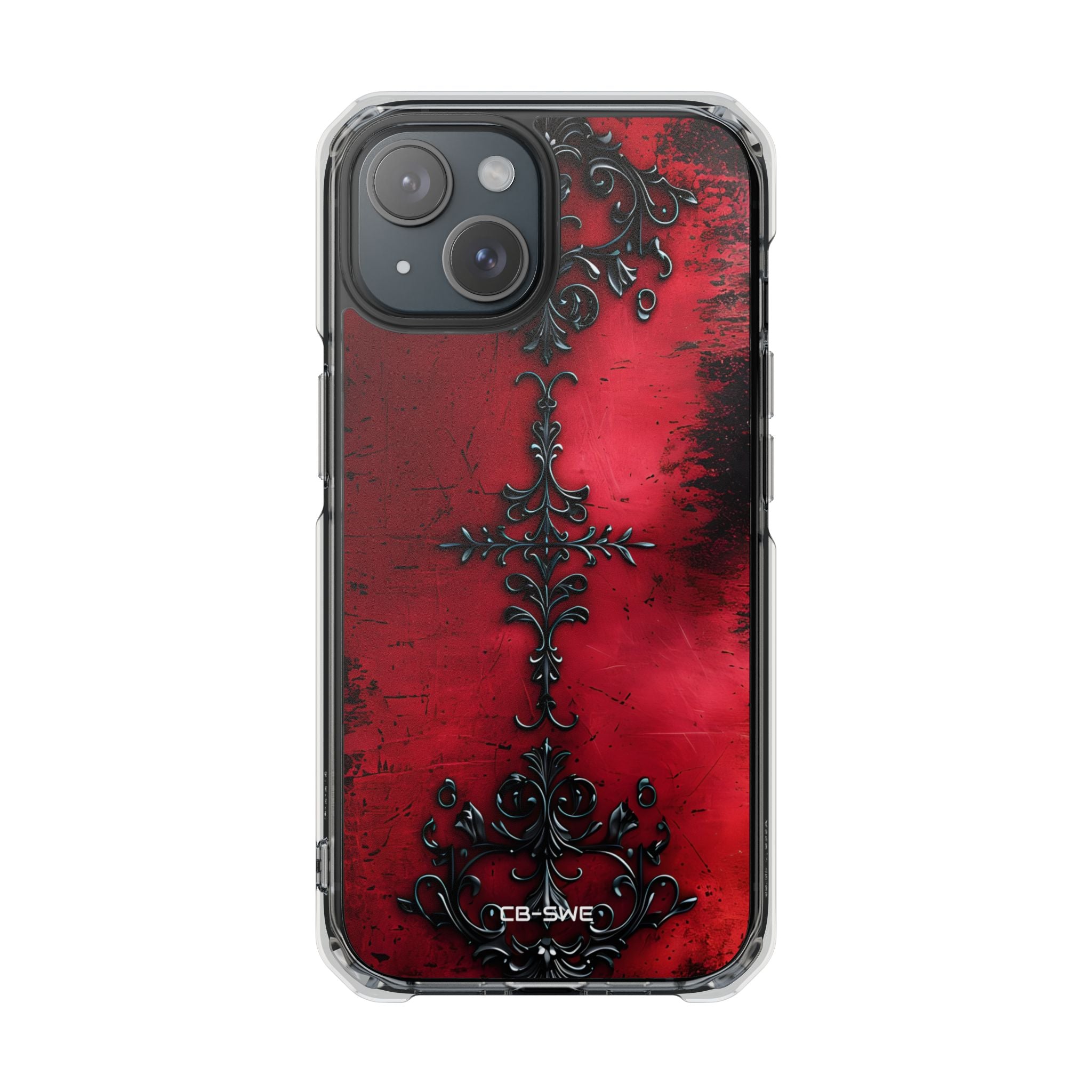
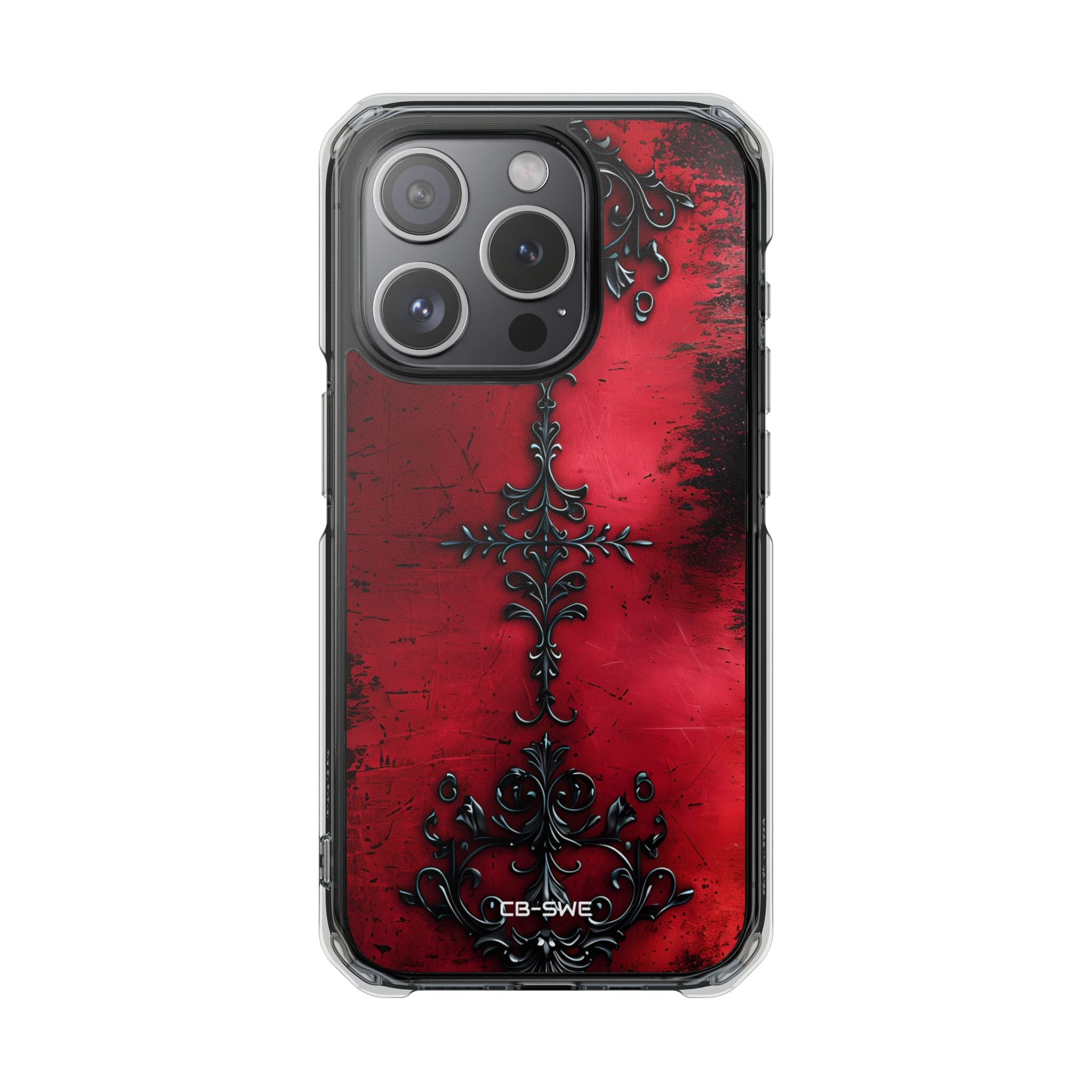

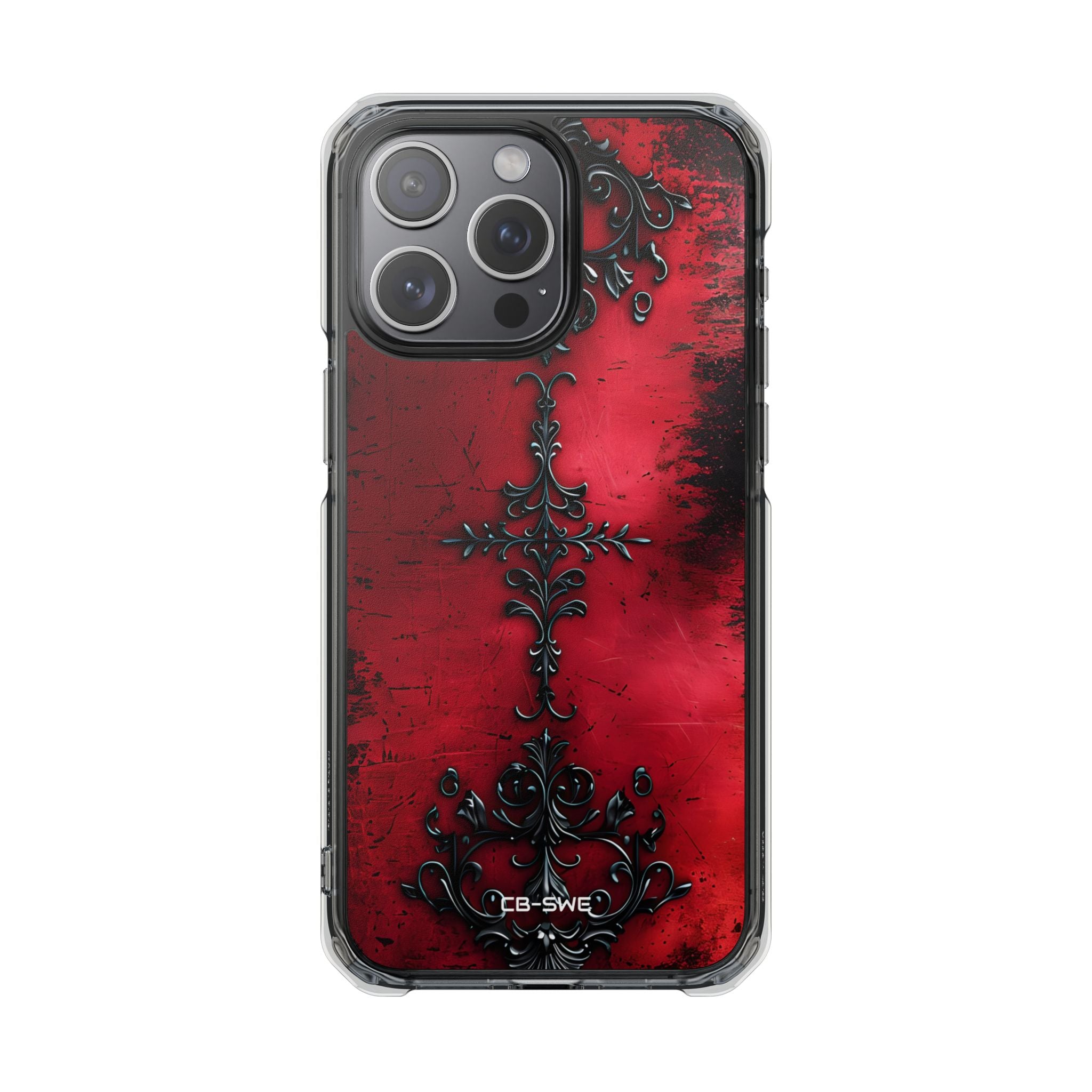


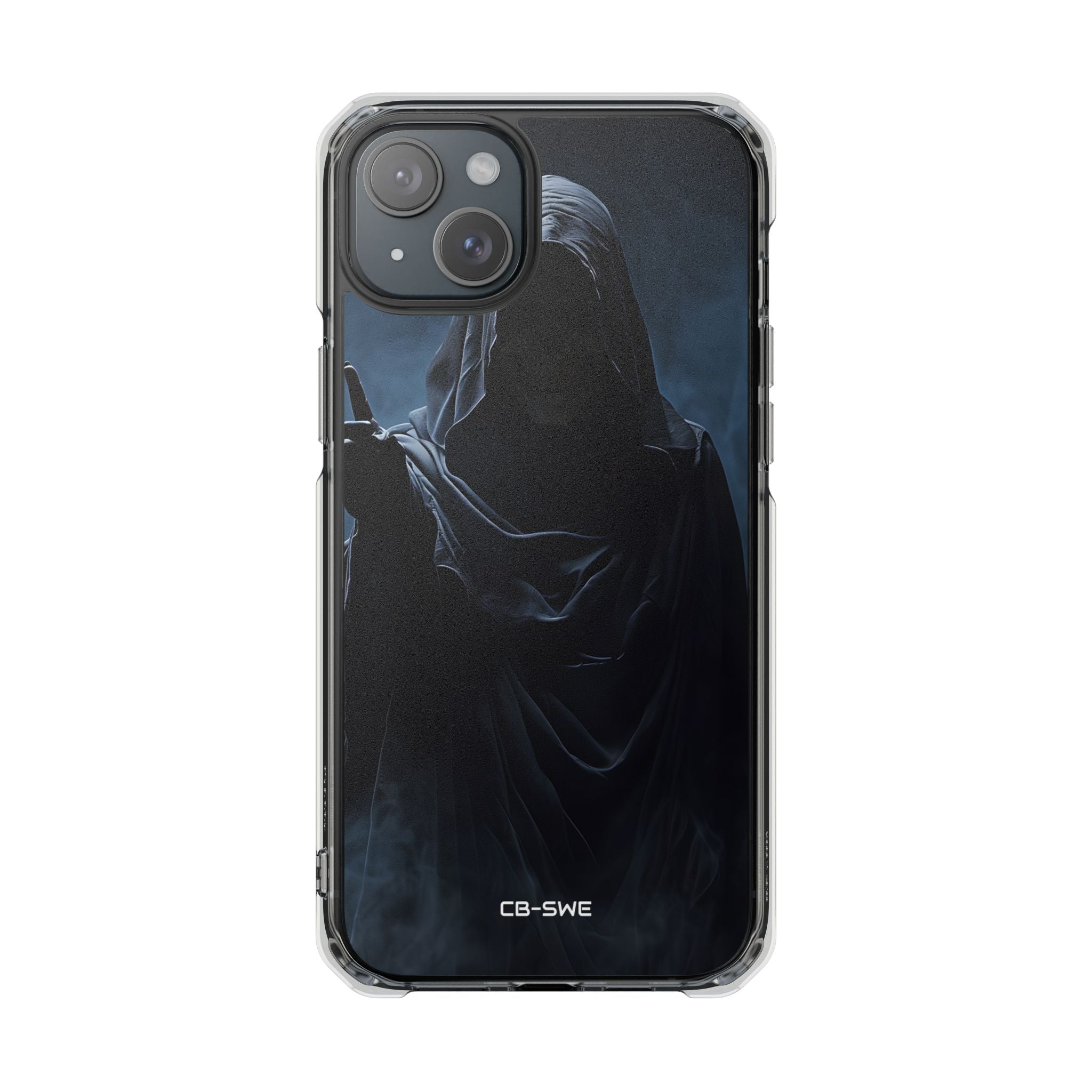
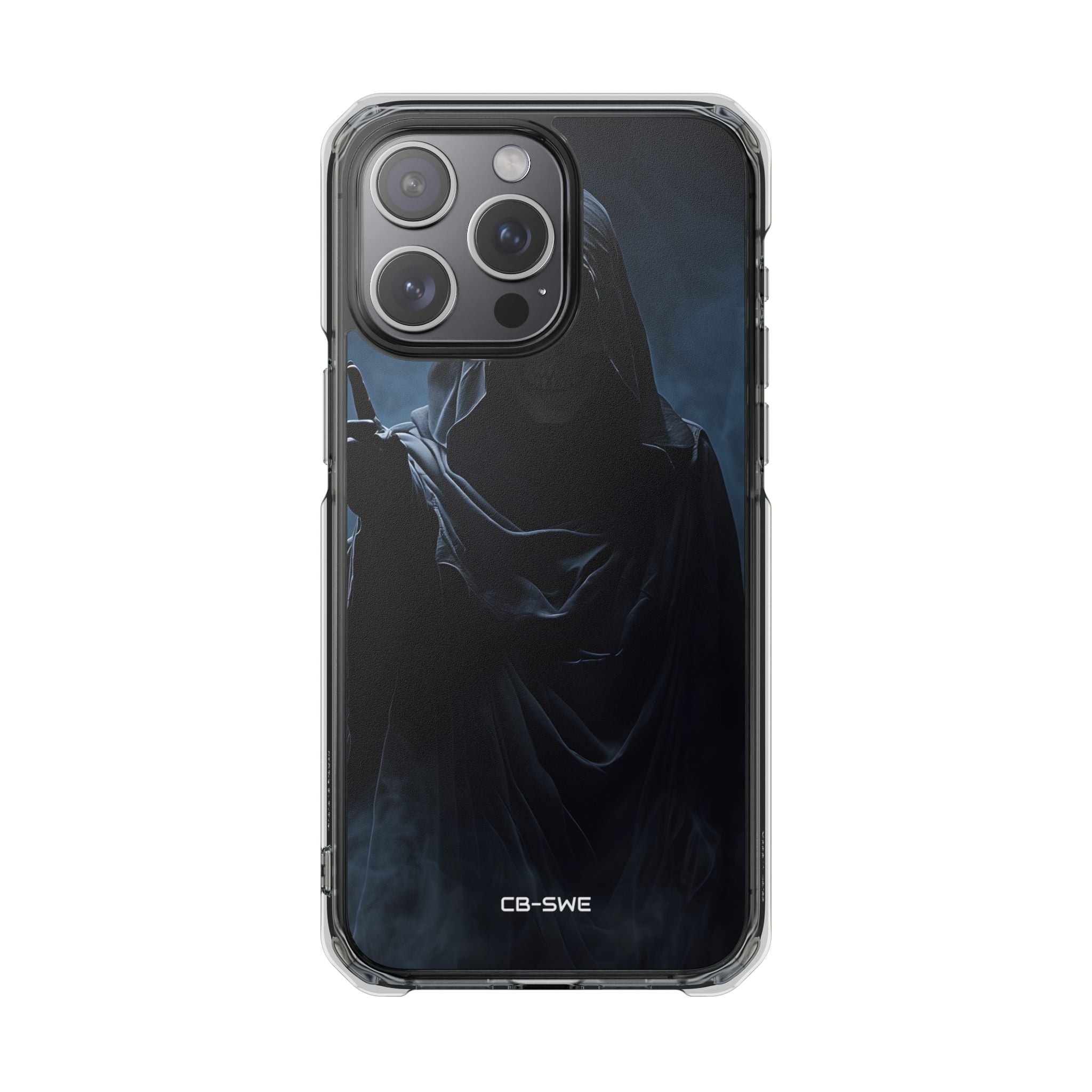
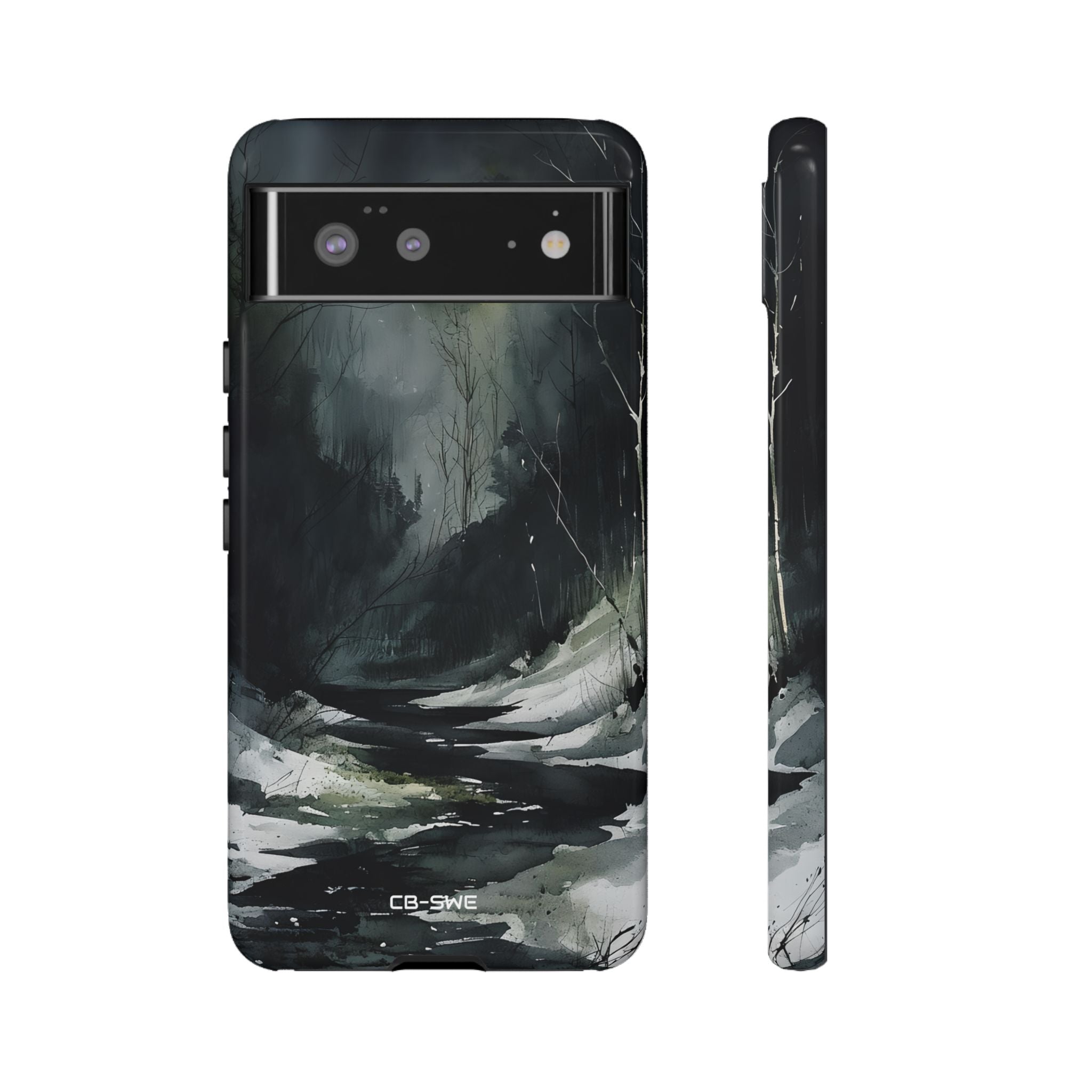

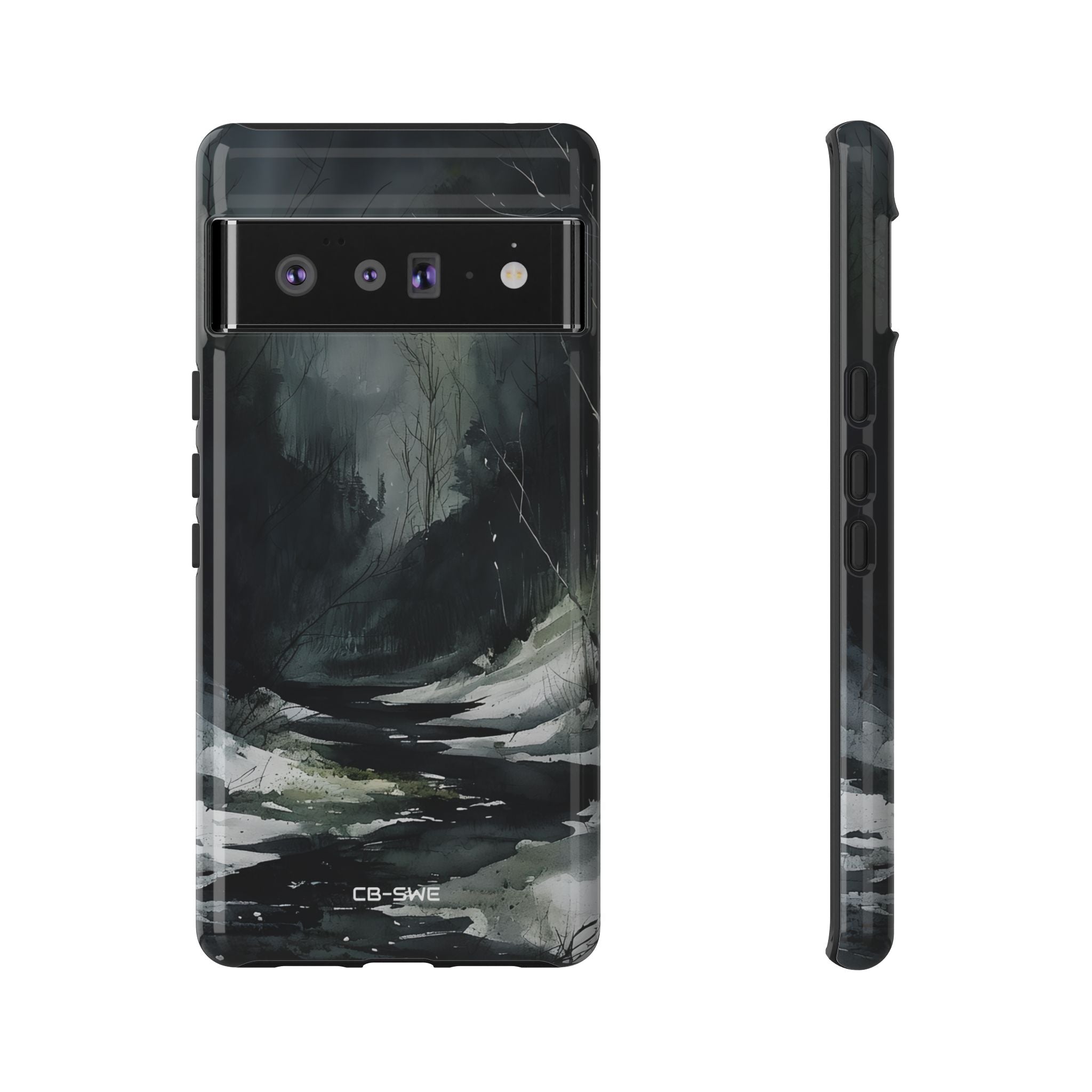


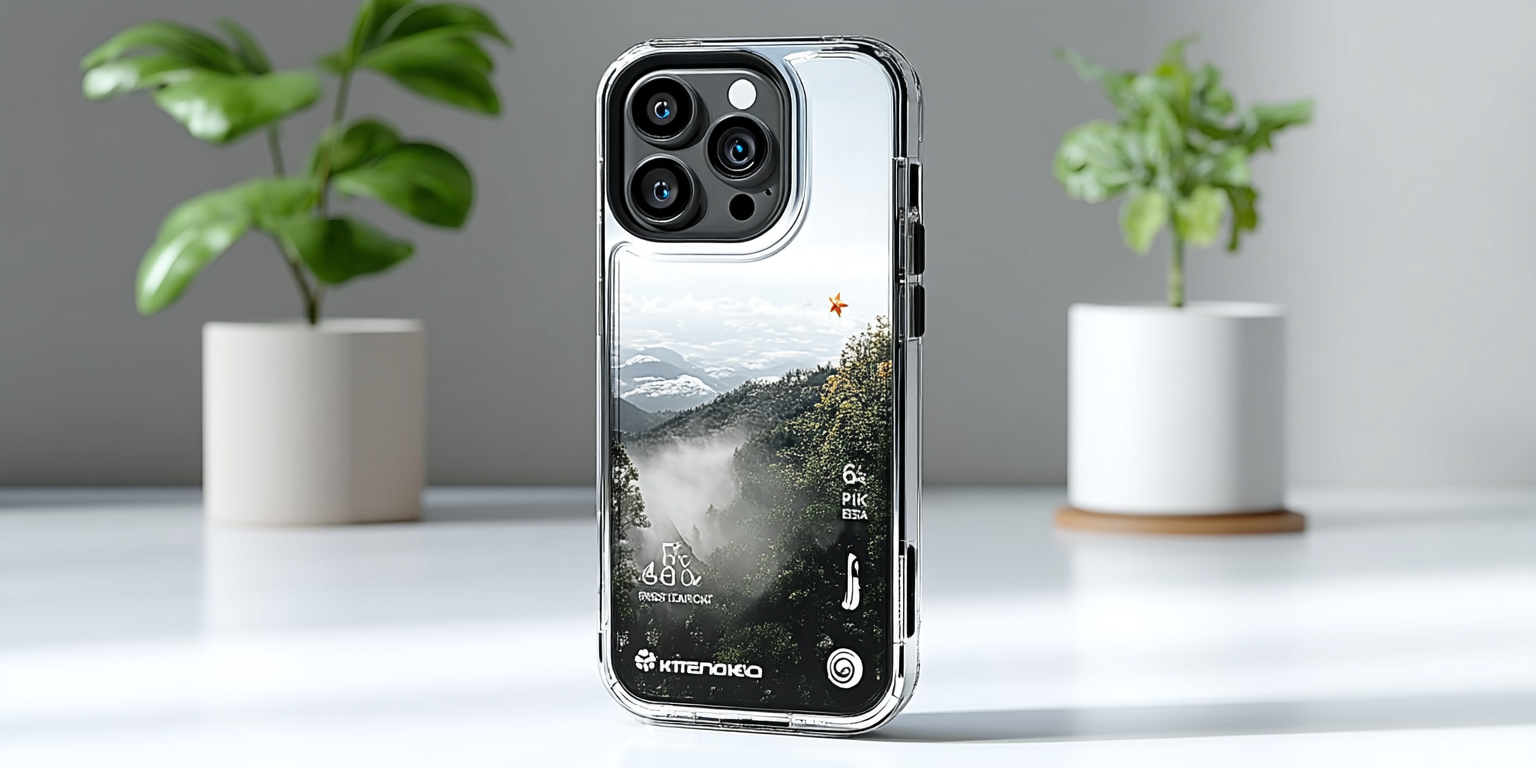
Del:
En guide til telefonetuier: Beskytt og tilpass enheten din
iPhone-etuier i 2025